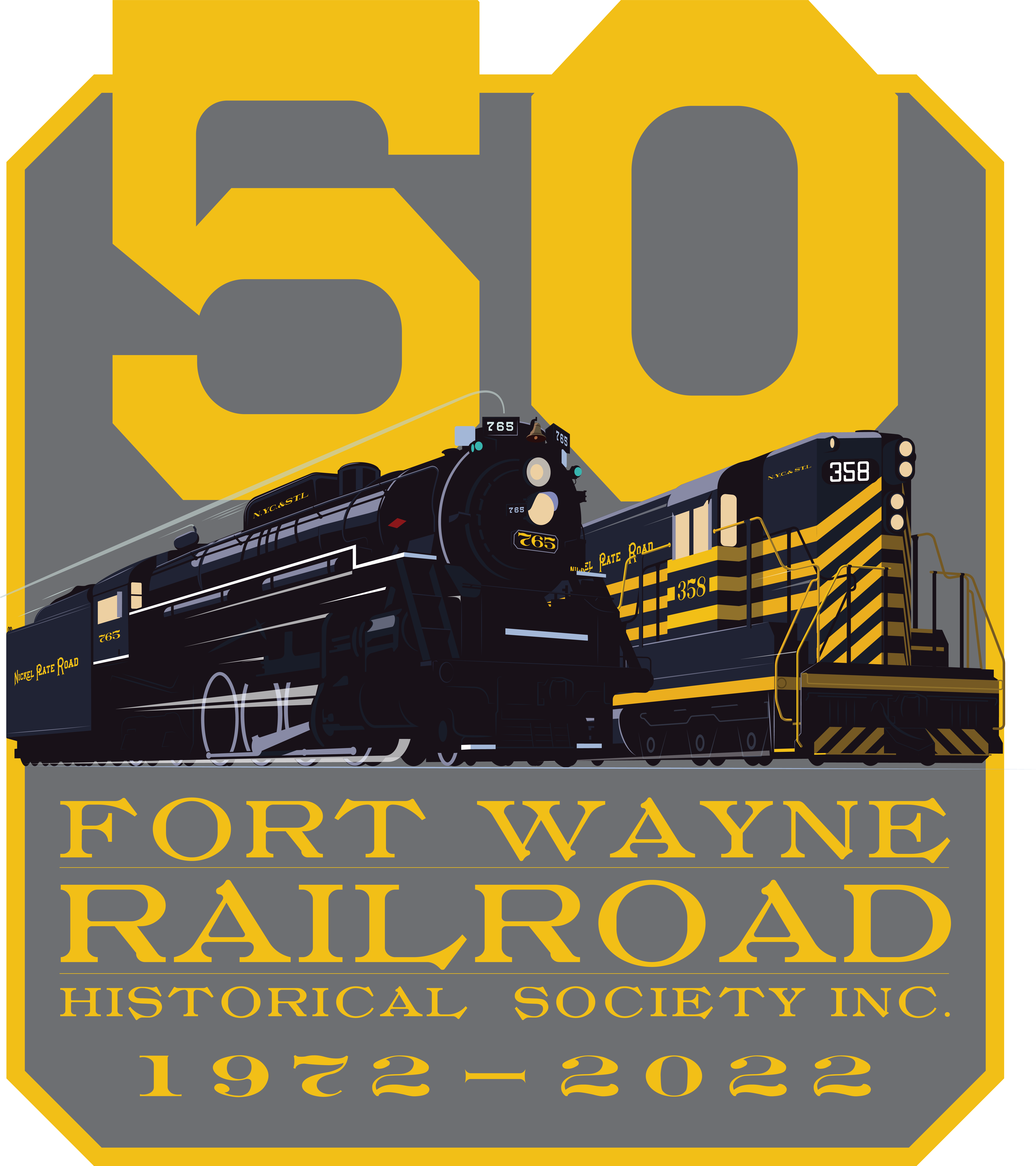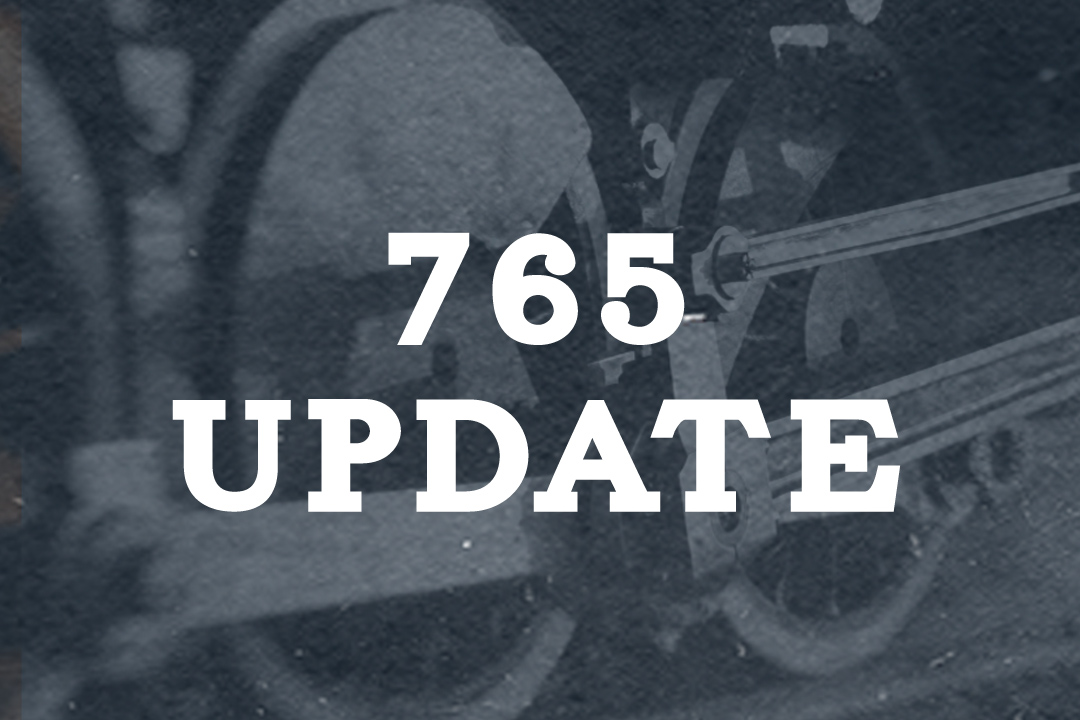Submitted by Steve Winicker
LAST WEEKENDS SHOP ACTIVITY
The weekend got off to an early start with my washing out the firebox while Rich W. worked on installing more tension rods on the Wabash Caboose. I also washed the inside of the cab getting some of the dirt off the interior of the cab to get it ready for the Santa train event.
Friday Zach was out and marked and ground the heads on 40 or 50 staybolts. Daniel Kester stopped by to get a fixture and more information for making staybolts for the 765. Our plan is to replace some stay bolts that have been driven and seal welded many times in the past. Other work included: bringing in the access stairs for cab tours while Rich, spent most of the day putting in more tension rods in the Wabash caboose. I spent some time picking up material for the caboose from the Metal Supermarket.
Saturday, Joe worked on emergency lighting, Austin did some work on cleaning out the smoke box and drilling tell tales, Rich worked on Tension rods completing the installation of all but one on the south side of the Caboose. It requires the application of a special casting which we decided to think about how to put in. Bill Martz worked on removing some rotting boards on the cab access platform. We took some time at noon to get some replacement wood from Menards and began applying replacement pieces for the decayed wood members.
Sunday, Sarah, Carl and I spent most of the time working on completing the access platform and putting the steps in place. Oil samples from the 765 axles were secured and made ready for shipment to Blackstone Labs for analysis. The samples will be checked for metals, water and other substances in the oil and give us an idea of whether there is unusual wear of the bearings and whether or not we need to change the oil to keep it effective.
Monday I finally got around to completing this report, arranged for porta john pumping for the Santa train, arranged to have the indoor toilet delivered, and to have the lawnmower picked up stored and serviced for the winter. Sarah and I got the pit sump pump working by plugging it in all the way. If you note water on the pit floor let us know it probably is a stuck float or, as in this case, an electrical disconnect. Sarah is painting the locomotive steps as I write and there is no telling what kind of trouble we can cause later in the day.
UPCOMING ACTIVITIES
The priority projects for the coming week is to get the shop ready for the Santa Train event. If time permits, we will get in and needle gun loose rust in the tender and drill more tell tales. Not a long list but it can keep nearly any number of folks busy so stop by and help if you can.
SAFETY SENSE
Most injuries associated with snow blowers involve injuries to the hand or finger, including amputation. Often the operator tried to clear a clogged auger or discharge chute with their hands.
No matter what kind of snow blower you’re using, here are a few basic steps to follow to help keep you and others from being injured.
· Turn off the engine on a gas machine or unplug the motor on an electric model before clearing a clog at the auger or discharge chute. Then use the clearing tool or stick, NEVER hands or feet, to remove the clog.
· Always assume that when the engine is running, the auger is spinning.
· Protect yourself from carbon-monoxide poisoning by starting and running gasoline-powered snow blowers outside while warming up the engine. Never run the blower in the garage or shed during warm-up.
· Don’t wear loose pants, jackets, or scarves, which can get tangled in a snow blower’s moving parts.
· Wear sturdy footwear with good traction.
· Exercise caution when operating on slopes or graded areas.
· Wear ear plugs or other hearing protection as necessary.
· Wear eye protection as objects, such as stones and other driveway debris can fly and/or ricochet.
· Thoroughly mix fuel to the proper gas/oil ratio for two cycle engines. Immediately cleanup any spilled fuel. Do not mix the fuel near and ignition source or open flame.
· Add fuel to the machine only when the engine is off and cooled. Use a funnel to prevent spills.
· Use an approved fuel container to store the gasoline.
· For electric models, use an outdoor extension cord and an outlet with ground-fault-circuit-
· Never direct the discharge chute toward people or areas where damage can occur. The blower can discharge hard objects much further than it can discharge snow.
Following these tips will help keep you safe. Clearing clogs is the number one cause of snow-blower-related injuries. Take special care when clearing clogs by ALWAYS making sure the machine is off and NEVER use your hands or feet to clear a clog. Use a clearing tool or stick instead.
SAFETY IS JOB 1
SAFETY FIRST ALWAYS


